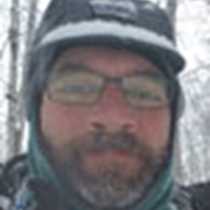Kiel Canal and the North Sea
Making our last port of call in the Baltic Sea at Lubeck, Germany, yesterday, we had set our course for the North Sea and the western shores of Europe. Prior to 1895 we would have had to navigate nearly 400 nautical miles around Jutland, Denmark, entering the notoriously risky waters of that region. Those two facts didn’t escape the German Navy either, with important trade and military bases located in the Baltic being isolated from the ports and bases of the North Sea.
Thus was the impetus for the 61-mile-long Kiel Canal. With construction of the canal beginning in the summer of 1887 at the Baltic port of Holtenau, it took 9,000 laborers and eight years to reach Brunsbüttel. Also, at either end of the canal locks needed to be constructed to counter the tidal and gradient difference from one sea to the other. In 1895 the canal was opened by Kaiser Wilhelm II and throughout its history has proved to be not only an engineering marvel but a vital waterway for passage of commerce, with over 43,000 vessels each year transiting the canal.
The canal winds its way through the rich agricultural landscape of the state of Schleswig-Holstein in northern Germany. Our weather for such a scenic a relaxing passage could not have been nicer; all morning guests were enjoying the scenery from the various decks and conversing with staff and officers on the bridge as we watched the countryside glide by. A waterway like this isn’t only beneficial for the vessels cutting a few hundred miles off their passage; it serves as a natural pathway for migratory birds and resident waterfowl to utilize the abundance of resources freshwater ecosystems can provide. Nearly everyone witnessed many families of mute swans along the way, their cygnets still identifiable by their dusty-grey plumage. To the keener eye – or better, ear – scores of migratory songbirds were feeding and moving along the shores in the various trees and shrubs that lined them. Their faint contact notes and calls could be heard from the ship as they fattened up for the next leg of migration. Soaring over the fields and pastures were buzzards and marsh harriers searching for prey.
Making the most of this relaxed day of transiting the canal, we were treated to a few presentations by the expedition staff. In the morning our photo instructor, Justin Hofman, provided an introduction to expedition photography with a hand’s on break-out session afterwards to assist all levels of photography interest and experience. Next our historian David Barnes gave a lecture dealing with the Hanseatic League, a prevalent and influential trade league that dominated this region for nearly 300 years. Another fitting and contextual talk was given in the afternoon by naturalist David Cothran entitled, “Malt, Hops, Water.” This of course equals Beer, and what better time to learn about a beverage that has long reigned in this region. Not to mention Oktoberfest just kicked off here in Germany. Lastly, National Geographic photographer Catherine Karnow gave a short talk on Amsterdam, our destination tomorrow.
By early afternoon we had entered the lock at Brunsbüttel and alongside there we waited as the water level was lowered nearly three meters before setting off to the River Elbe and out to the North Sea. For tea time our galley crew had prepared grilled German sausage and served local wine on the aft deck. So thanks to the Nord-Ostsee Kanal, now called the Kiel Canal, our expedition has entered this region in grand form and eager to see what awaits.




